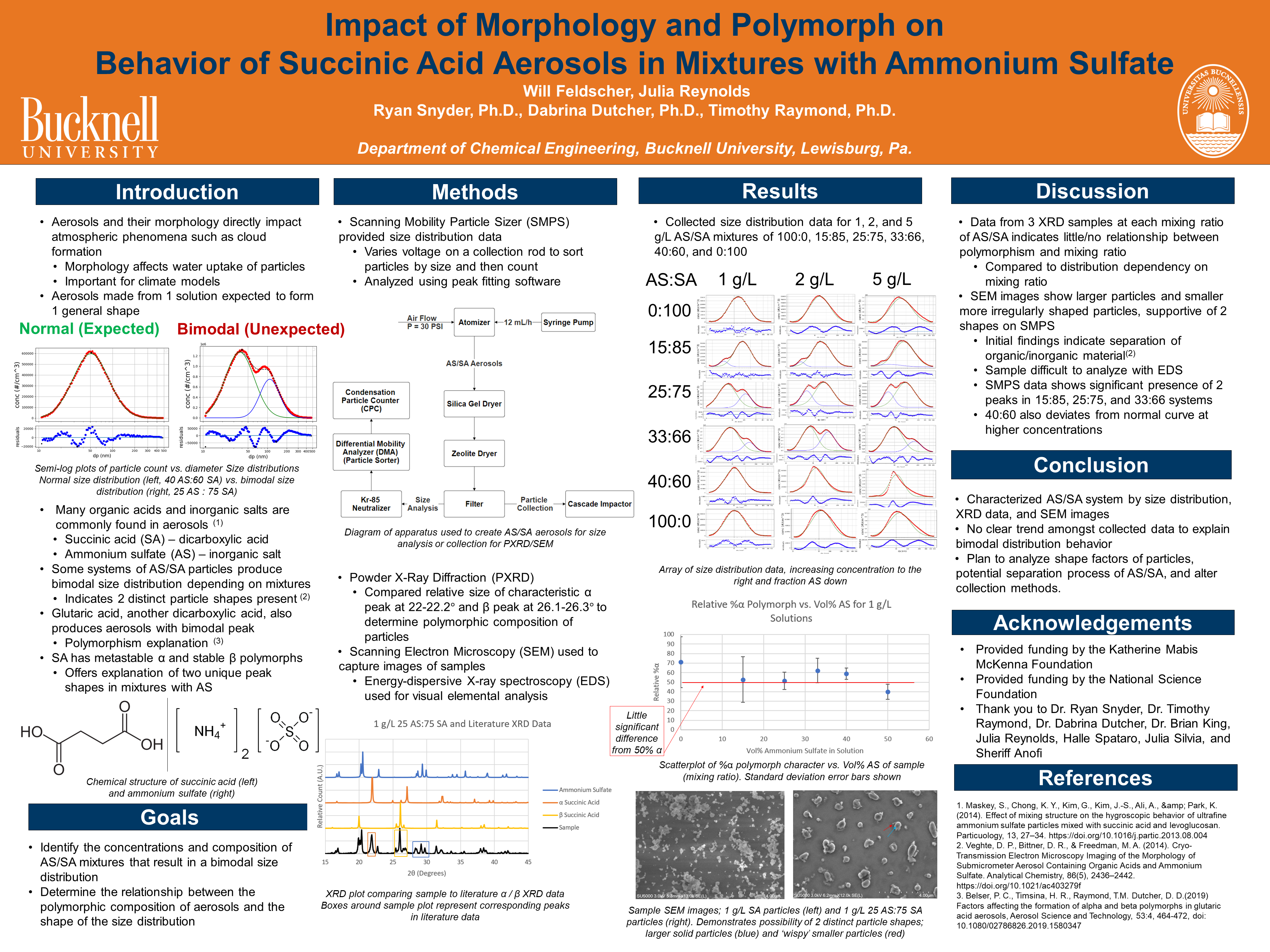
Impact of Morphology and Polymorph on Behavior of Succinic Acid Aerosols in Mixtures with Ammonium Sulfate
Author:
Will Feldscher ’26Co-Authors:
Julia Reynolds, Julia SilviaFaculty Mentor(s):
Ryan Snyder, Chemical EngineeringDabrina Dutcher, Chemical Engineering
Timothy Raymond, Chemical Engineering
Funding Source:
Katherine Mabis McKenna Summer Environmental FellowshipAbstract
Particles on the scale of nanometers are incredibly important in atmospheric chemistry due to their complex role as aerosols in the atmosphere. Atmospheric aerosols and their morphologies directly impact cloud formation, which in turn affects global warming and climate change modeling. In this project, a system of succinic acid, a dicarboxylic acid, and ammonium sulfate, an inorganic salt, was studied as both are commonly found in atmospheric aerosols. Aerosol systems are commonly studied by analyzing their size distributions, and it is expected that most systems produce a Gaussian (normal) size distribution. However, the succinic acid/ammonium sulfate system is noteworthy for containing aerosols with a bimodal size distribution. One plausible explanation for the observed bimodal size distribution is related to the polymorphism of succinic acid, as different crystal structures could produce different particle sizes.
This project utilized a syringe pump to feed aqueous solutions of varying concentrations and mixing ratios of succinic acid and ammonium sulfate into an atomizer to produce nanoscale particles. These particles were then dried and analyzed in a Scanning Mobility Particle Sizer (SMPS) system to obtain size distribution data. To test for the presence of different polymorphs in solutions of succinic acid and ammonium sulfate, particles were collected using a cascade impactor to then be analyzed with powder x-ray diffraction (PXRD) and scanning electron microscopy (SEM). The collected data allowed for the characterization of the succinic acid/ammonium sulfate system at different concentrations and mixtures of solution.